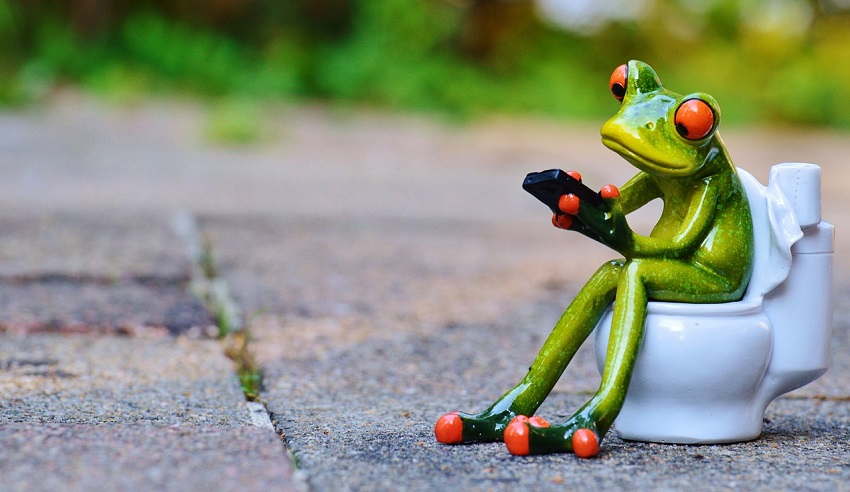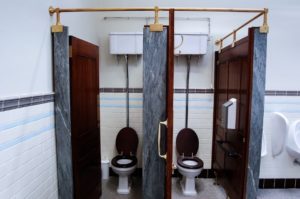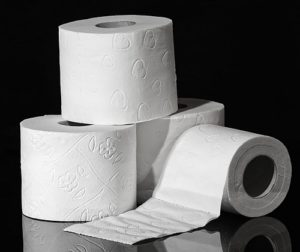
For decades, the toilet has been one of the safest and efficient ways to dispose of waste matter. With time, waste matter from our bodily functions stopped being the only thing we flushed down toilets. Currently, we are more likely to flush other offensive and unimportant items down our toilets because it is fast and efficient.
This also includes products which we are quite unsure of how to get rid of. A good example is wet wipes and sanitary pads. For years people have believed that products such as wet wipes and sanitary products are ok to flush. Some of the products even came with packaging indicating that it was okay to do so.
This has led us to blindly flushing them down into the sewer with no thought as to where they go and what happens to them after. Now we know!

The Effects of Flushing
What we flush has been building up unobserved, resulting in massive fatbergs that are only just rearing their ugly heads and causing issues that are affecting our lives above ground. A report in 2019 indicated that wet wipes cause 90% of blockages in the UK.
These blockages and back-ups are over-spilling and churning out into public water systems with more than 20,000 wet wipes appearing on the shores of the River Thames in a 2-hour cleanup process. One particular reason for this is that most of the UK use a 29th century sewage system. It is smaller and can hardly cater to the increased demand caused by the increasing population.
While wet wipes are meant to perform some of the tasks that can be carried out using toilet paper, they are not tissue paper. Wet wipes are made using chemicals and resins which prevent them from easily tearing apart when you use them. Additionally, they are meant to remain wet to prevent them from disintegrating when in contact with water, unlike tissue paper.
This makes it easy for them to get caught in the sewage systems which contribute to the formation of fatbergs. When they do eventually break down, the chemicals used to make up the plastics get into the environment.
The wet wipes also contain synthetic fibres like polyester and polyethylene which have been found to affect other organisms such as wildlife. Animals found to ingest such pollution in the form of microplastics have experienced blood poisoning, hormone imbalance and have had issues with their reproduction.
Their testing, especially the European standards of testing also only factored their ability to get flushed down the toilet without causing household blockages. However, wet wipes also need to be biodegradable. This allows the wet wipes to break down in the sewer system.
Measures Taken to Address Flushing of Wet Wipes
The issue surrounding wet wipes has been massively discussed in the media. This saw the creation of the ‘fine to flush’ campaign.
The main objective of the campaign is to not only educate the public and give them peace of mind that they’re not contributing to the problem but also to salvage the reputations of companies that for years have been saying it is fine to flush their products.
What is the Fine to Flush campaign?
The Fine to Flush campaign was solely created to address wet wipes and their contribution to fatbergs. It allows the creation of an official standard that identifies which wet wipes are actually fine to flush without causing adverse effects to the environment.
Wet wipes must undergo strict testing to receive certification. One requirement is that they must break down quickly enough so as not to cause blockages in the drainage systems. They also must not contain harmful chemicals which will affect the environment. Under the rules of the Fine to Flush campaign, manufacturers must have their products tested to determine whether they meet the required standards.
Fortunately, some brands in the UK have taken the initiative to produce flushable wet wipes that have no adverse effect on the environment. For example, Natracare is the first UK brand to carry the symbol claiming to be ‘truly flushable’ and is 100% plastic-free.
On the Safe Side
Everyone is busy educating about FOG, with commercial kitchens understanding the implications of poor grease management and the importance of investing in, installing, maintaining and cleaning grease traps.
However, these are not the only contributors to fatbergs in the UK’s sewer system. The efforts to ensure that commercial kitchen owners act responsibly won’t protect against wet wipes. In order to tackle all areas of fatberg contributors, measures need to be taken in order to combat the whole problem head-on.

One of the safest ways to prevent fatbergs is still to remember the 3 P’s rule. Only flush pee, poo and paper. In instances where wet wipes need to be used, or if you’re thinking of putting something down the toilet, be sure to look out for the ‘fine to flush’ logo.
Wet Wipes are Our Responsibility
Wet wipes are an incredibly important (and convenient) part of our lives. They are compact and easily portable allowing us to carry them everywhere. They help us maintain hygiene standards without the stress of looking for or having to carry water. However, we need to be responsible in regards to the kind of wet wipes we use and how we dispose of them lest they create an even bigger problem to the environment in the future.

Leave a Comment
Your email address will not be published. Required fields are marked *